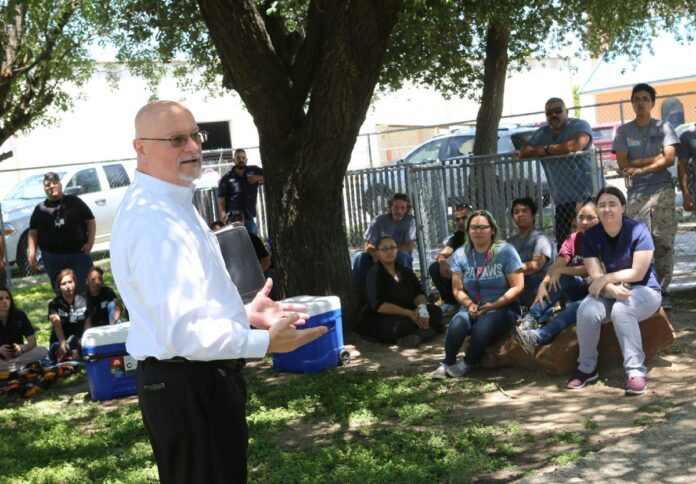EDINBURG — The Palm Valley Animal Center announced Friday its intent to become a no-kill shelter, pledging to help save as many companion animals as possible as it moves forward.
Tim Ousley, executive director for PVAC, made the announcement during a staff meeting Friday afternoon for both PVAC and its sister organization, the Laurie P. Andrews PAWS Center. The board of directors voted on the issue Tuesday, ushering a new era for the facilities.
“Our board is committed to making the changes necessary to pursue and hopefully achieve no-kill status,” Ousley said, as he read from a prepared statement from the board. “This requires more staff, time and money, but it also requires the community to step up and join us in this monumental effort by volunteering, fostering, adopting, donating and teaching the next generations the life-saving importance of spaying and neutering Valley animals.”
PVAC recently underwent major reforms after a video of the facility surfaced on the web and resulted in widespread criticism. But Ousley said the negative attention was not a determining factor in Tuesday’s decision.
“I don’t know that that helped,” he said. “We were on this path already and moving in this direction — working with Austin Pets Live! and Best Friends Animal Society — long before this ever happened.”
Still, the attention helped raise awareness for the community.
“If it causes the public to become aware of what they need to do, then we’ll take the hits so that we can save the animals,” Ousley said.
In the last five or six years, the organization has grown from about 37 employees to today’s 112. Before 2017, the live release rate at PVAC was around 10 percent, meaning 90 percent of animals faced euthanasia. Last year, PVAC posted a live-release rate of 35 percent, and so far this quarter, the center is at just over 50 percent.
Achieving a no-kill status requires a live release rate of 90 percent or better, Ousley said.
“There’s nothing better than saving lives, especially when all we were doing in many cases was taking lives,” he said. “Now, becoming a life-saving organization is an entire spirit change in who we are.”
It’s still unknown how much more funding and manpower it will take to turn the shelter into a no-kill facility, but that’s something that will soon reveal itself, Ousley said.
“We really don’t have any clue,” he said. “We’re taking this one day at a time.”





